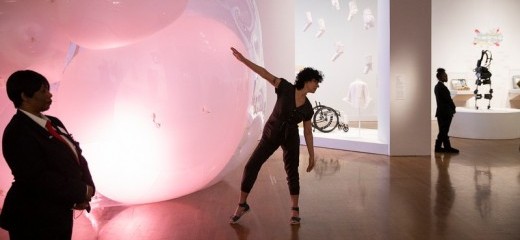
Primordial Pasts to Future Visions at the PMA
by Preeti Pathak
“...remember a time when you were just a collection of cells.”
“Do you remember that?”
Nicole Bindler’s* words echo over the microphone strapped to her waist: her voice is our guide in this journey through the Designs for Different Futures exhibition at the PMA Friday Remix event.
Bone, Fascia, Blood, and Breath, a choreographed performance and guided tour, starts with Bindler emerging from behind Another Generosity: a towering plastic membrane encapsulating luminescent cellular structures. An array of peach tubes run through the membrane like strands of connective tissue. The structure consists mostly of air and water; the basic elements of life. After briefly dancing in front of the piece, Bindler breaks into her monologue. She reflects on how our bodies, like the membrane, are predominantly water. The structure begins to glow an orangy-pink, and takes on a womb-like quality. The artwork reminds Bindler “of an embryonic zygote that has just cleaved.” Guiding us through our evolution from sea to land, from soft cartilage to hard bone, Bindler mentions that we come from and are made up of invaginations, cracks, and crevices. She shares anecdotes about the effects of gravity on our skeletal structure. Gesturing towards the membrane, Bindler expresses that we take on the qualities of our environment in order to survive. We are connected so deeply to the membranes we inhabit, whether womb, water, or air. Her steady and soothing tone bounces against the hustle-bustle of the museum. We exist in our own membrane, possibly a parallel dimension, unnoticed by other museum-goers. They whirl around the exhibition, grab cocktails in the lounge, and get identity-distorting makeovers with Ariel Versace.
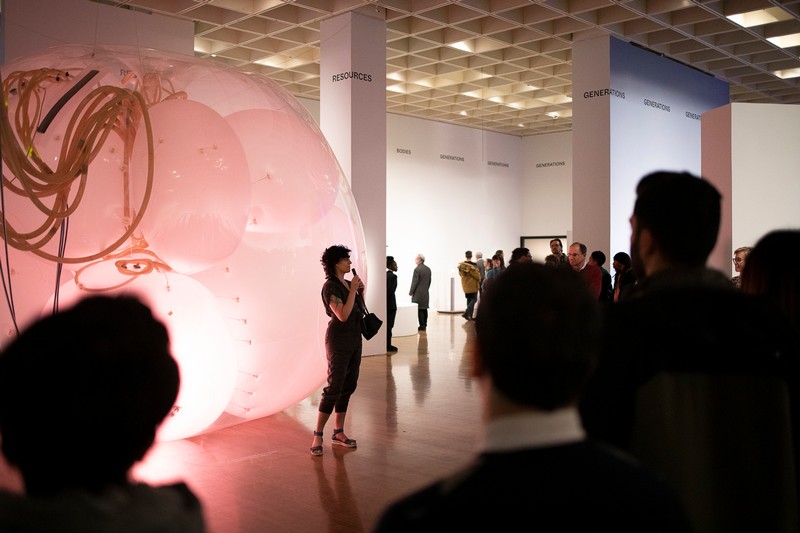
Photo: Philadelphia Museum of Art
In our dimension, Bindler reverses time to prehistoric memories. Choreographing our paths through the exhibition, she constricts my movement in a meaningful way, manipulating my attention to space, challenging me to focus on my body in relation to the art surrounding me. At first I feel fidgety, distracted by the hyper-stimulation of the environment. I don’t know where to focus my eyes and attention. As I follow her narration, I feel myself letting go. We become the performers with Bindler as our tether and the exhibition our stage.
We approach a case containing 3-D printed objects, including a lunar settlement model inspired by skeletal systems. I see the invaginations she speaks of in a cross-section of ivory-colored bone, which creates a beautiful honeycomb pattern. We’re then directed to pull out our phones and watch a video about the future of lunar architecture by Foster + Partners. Bindler opens the floor to questions. I ask her what she thinks of Elon Musk’s dream of a colony on another planet. She laughs and retorts that she has many thoughts on Musk (but we only have so much time). Bindler ponders the idea of building plans based on the belief that earth will one day be uninhabitable. She asks what it means for our future if we’ve already given up on earth, and she questions the choice of trying to survive in an environment that will surely deteriorate our bones. Another audience member “asks” a question that turns into the mad ramblings of a mansplainer. I’m reminded of the risk performance artists and women like Bindler take in participatory work.
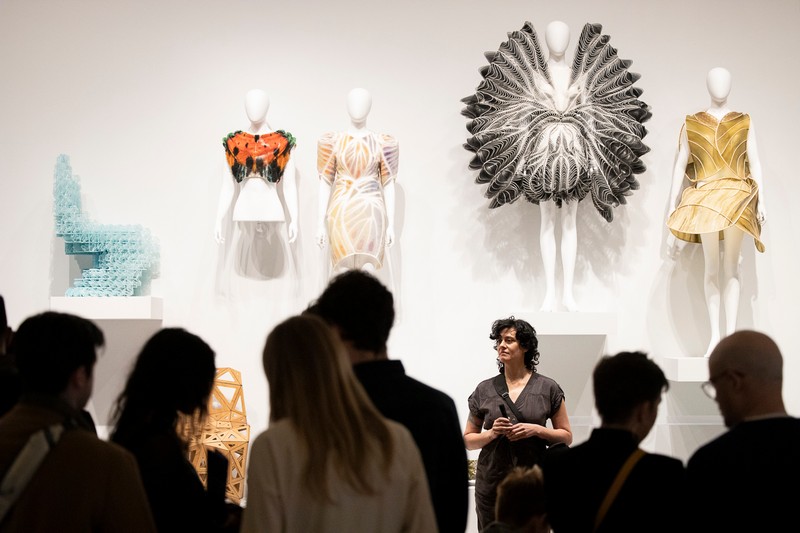
Photo: Philadelphia Museum of Art
Leading us to the next stop on our tour, Bindler asks us to take time to think about how we move through gravity; to feel the weight of our body, our bones, and our structure. “Imagine you’re like the fish who move through water.” I try to focus on my body, realizing how I often take its movements for granted. I think back to her earlier comment that we carry prehistoric water in our cells. The power of this reality reverberates through my being. Everything is connected. Bindler’s performance evokes the deep presence of my faith. I can feel the weight not only of my Bone, Fascia, Blood, and Breath, but of my soul.
Our next destination, Future Therapy Lab, is our chance to take a break and rest. In the lab, the energy of the event is muffled, and a warm, inviting feeling washes over me. The space is part art studio, part futuristic library. I sit against a cushion under soft yellow lighting. Bindler directs us to feel the connection of our bodies to the earth. I naturally find myself in a meditative pose as I close my eyes and breathe. I smirk at the fact that this is something I never thought I would do in a museum. It feels refreshing. I take a few moments to praise bhagavan. Bindler helps us to intertwine our personal and collective dimensions, guiding us to the visionary future by contemplating our primordial past. Maybe this is what it felt like when we were just a collection of cells…
*Nicole Bindler is a writer with thINKingDANCE.
Bone, Fascia, Blood, and Breath, Nicole Bindler, Friday Remix, Philadelphia Museum of Art, January 31.
By Preeti Pathak
February 10, 2020

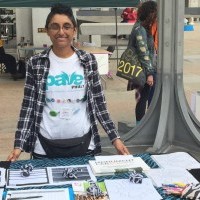
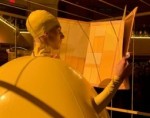
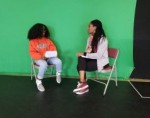
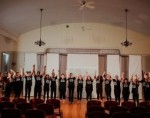

.png)


